A-ha memories from Product Faculty — Fall 2018 Cohort
The a-ha series is about the moments when I felt something new. "Jot down the moments when you learn something new. And what's really important is it's not just about knowing something new — it's feeling something." — Coe Leta Stafford, IDEO
It was fall 2018 and I stepped into my first senior manager role. Five years working on product delivery, I read INSPIRED: How to Create Products Customer's Love and knew it was the next thing I wanted to build mastery in. A few google searches, a call with Moe, I signed up for his Product Faculty course. Two years later, I went back to publish my a-ha memories and finished the class project.
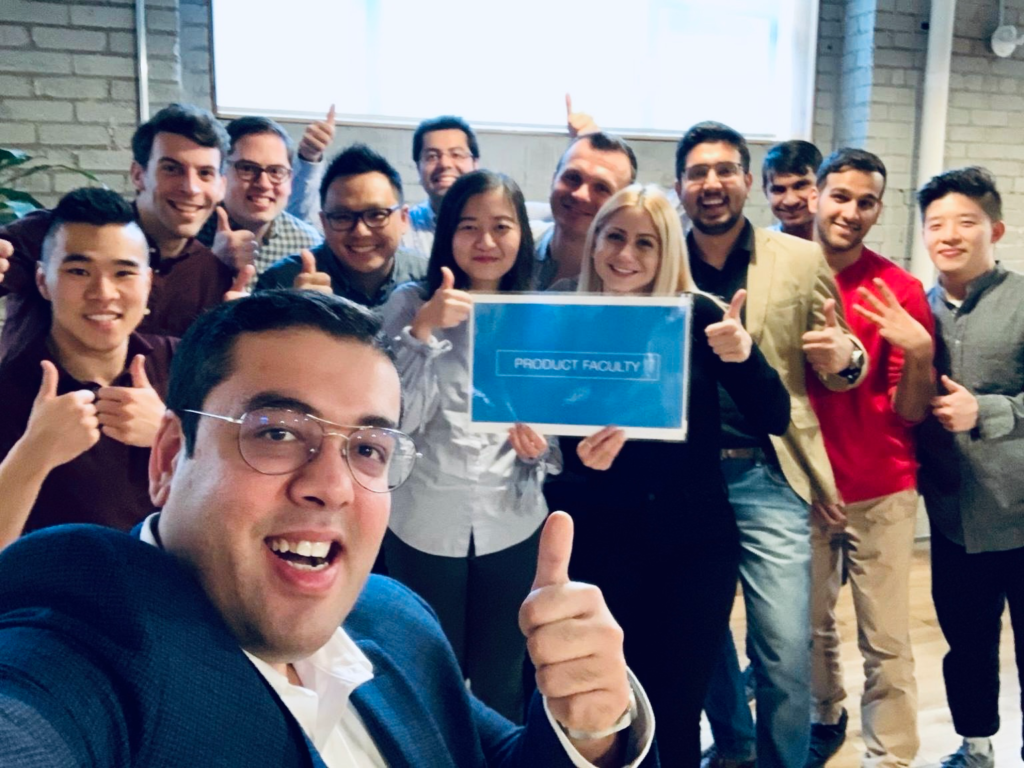
I hear Moe put tons of into growing and evolving the course. He's the best if you ask anybody. I couldn't recommend a better teacher and class. Hit him up. These are my a-ha memories.
Product Management Foundations
Stakeholder management
Stakeholder management is 50% of product management.
I carried this with me every day from this point on and told my team about it. Every person you interact with has a stake in the game.
Use the Chasm adoption lifecycle to identify your narrow market of early adopters
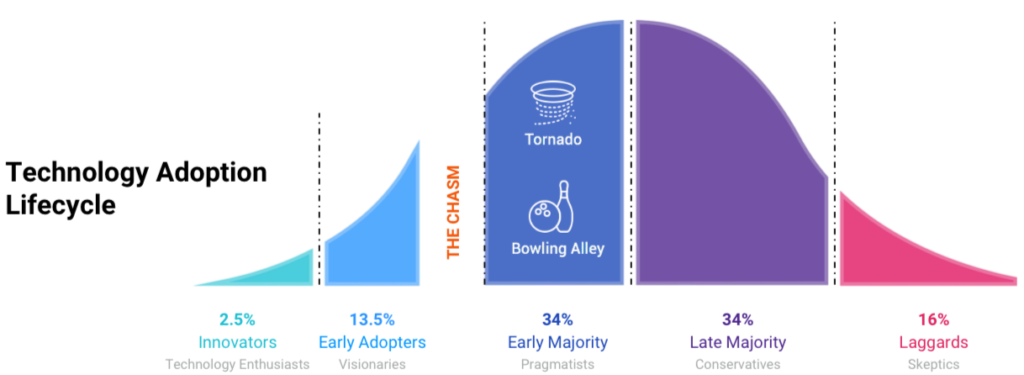 I didn't connect the importance back then. But when I needed to create my first Go-to-market Strategy, the connection clicked. You learn:
I didn't connect the importance back then. But when I needed to create my first Go-to-market Strategy, the connection clicked. You learn:
Focus is: There are 2,700 companies that we are targeting that we know can use our product. Focus is not: There's a huge market opportunity. There are 100 million businesses that can use our product. Find your focus, as narrow as possible, by finding your early adopter market.
Product Management is the center of Customer, Technology, and Business
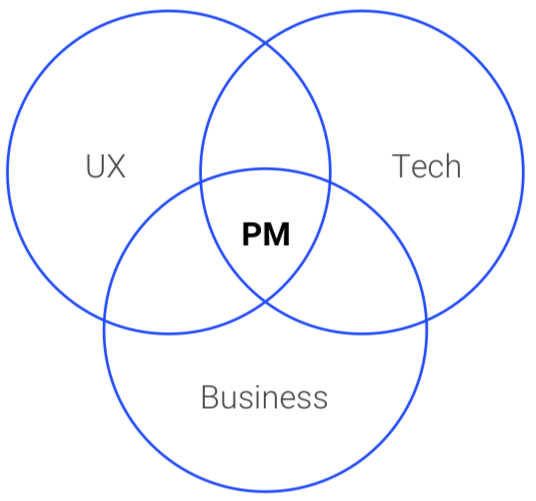 ]
]
People often asked me why I am curious about so many things. I couldn't give a simple answer until this picture.
Strategy
Blue Ocean Strategy
When seeking product-market fit, seek the spaces not in existence today, the unknown market space, spaced untainted by competition.
After finding product-market fit and competition comes in. Don't try to outperform your competitor. Seek new product-market fit in new blue ocean areas. Your ethos is to disrupt yourself.
Ideas are easy. Execution is everything — the emotions you'll go through
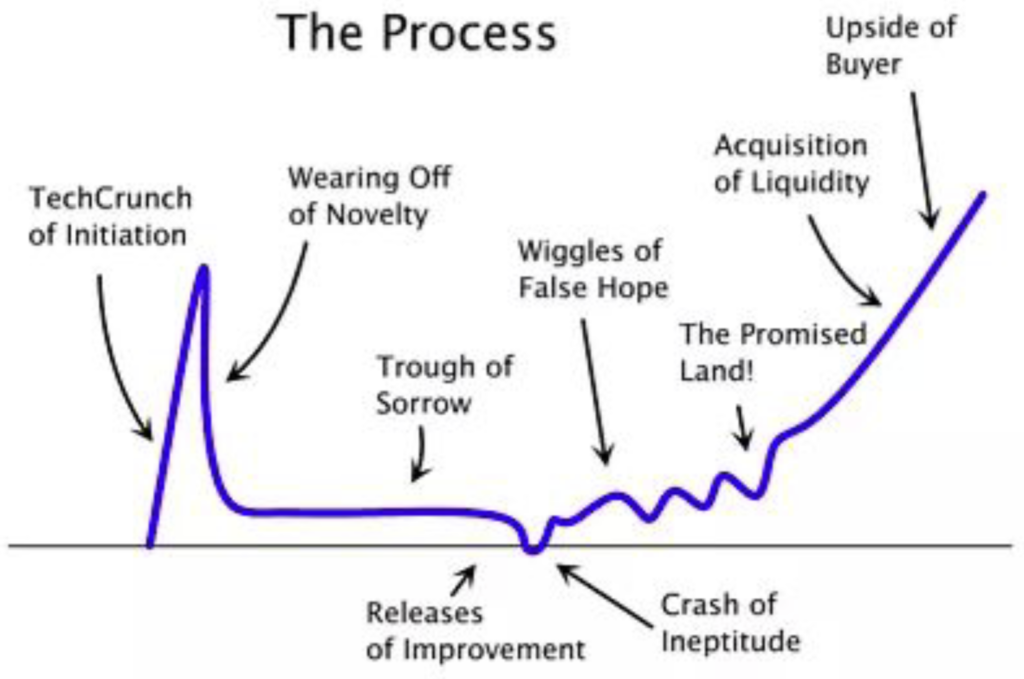
Finding Product-market Fit takes perseverance. Most hate the word failure. We need a better word to understand failure is learning. You don't fail until you stop trying!
Riskiest Assumptions
We have to assess various risks.
- Value Risk: Whether customers will buy it or users will choose to use it.
- Usability Risk: Whether users can figure out how to use it.
- Feasibility Risk: Whether our engineers can build what we need with the time, skills and technology we have.
- Business Risk: Whether this solution also works for the various aspects of our business. This reminds me of a favourite article, The MVP is dead. Long live the RAT.
Agile is useless without customer feedback. I'll be a bigger contrarian — Agile vs Waterfall isn't about being faster or less risky. To me, it's being honest with yourself. We need to practice unlearning what might have been true before and no longer is today. Waterfall is saying you know the future. You are predicting what you need 1-2 years ahead of time. You can fully design the solution today that you won't start building for 1.5 years. You're expecting your customers and stakeholders won't change their minds.
Check out these talks that became my foundation for agile delivery.
I'll never forget this one — Customer Interviews to understand the root of the problem[Customer Discovery: What Do You Ask, with Justin Wilcox - YouTube]
- Tell me a story about the last time ___? (This is key, it has to be a real past experience, no hypotheticals)
- What was the hardest?
- Why was that hard? (Ask why 5 times to get to the heart of the problem)
- How do you solve it now?
- Why is that not awesome?
- What does your perfect experience look like? (Credit to Arianna Lu for adding this)
3-peat (tell me about another time like this…3 times)
This is my go-to to build empathy with a user. Take notes or ask if they're okay being recorded. Take real note of their emotions. Most importantly, listen to be curious, not to respond. It's their time to speak, your turn to listen.
Building empathy with your user
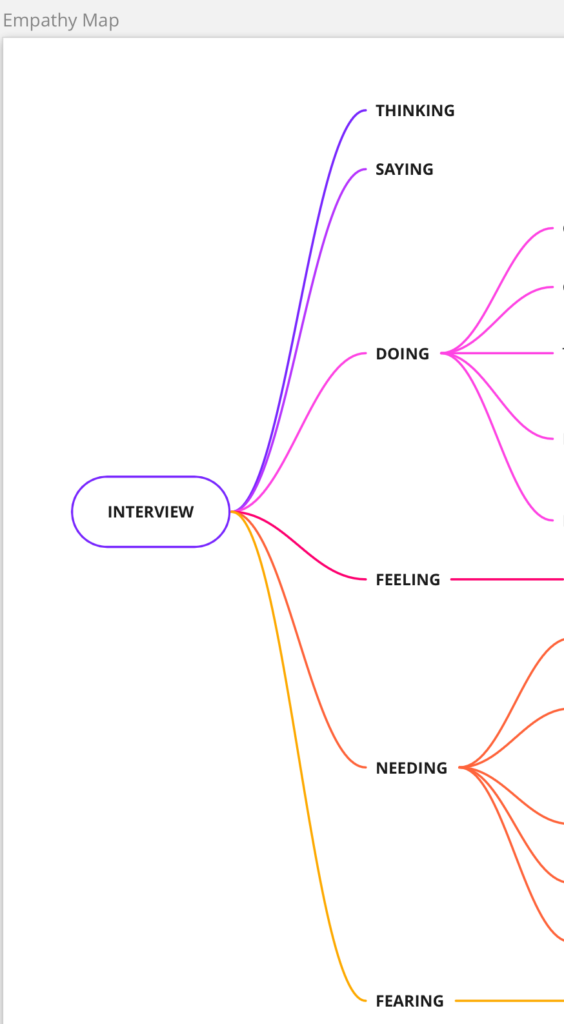
Use your notes to build empathy with your user.
Desirability, feasibility, viability of your product offer
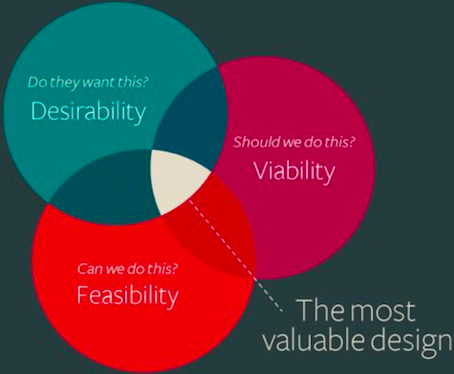 Product Managers need to define the "what" of the user experience and technical products that drive
Product Managers need to define the "what" of the user experience and technical products that drive
- Customer's Desirability: How much will customers love having this problem solved?
- Feasibility: How feasible is it for us to deliver the solution?
- Business Viability: How much will customers pay to have this problem solved?
Stakeholder Management & Roadmaps
Learn the importance of saying NO
"People think focus means saying yes to the thing you've got to focus on. But that's not what it means at all. It means saying no to the hundred other good ideas that there are. You have to pick carefully. I'm actually as proud of the things we haven't done as the things I have done. Innovation is saying no to 1,000 things." — Steve Jobs
This goes nicely with another favourite piece Getting to ‘no' – how to build better products through disagreement. You must learn to:
- Default to saying YES to trying something "new."
- It's good to say NO. Every idea, every request, has to fight for survival based on its merit, timing, etc.
First 6 months of a new Product Manager - Build trust
Your most important job in the first six months as a product manager is to build trust with your peers and stakeholders.
If you want the latitude/freedom to come up with the most effective solution, it's critical to convince each stakeholder that their issues are understood & that you are committed to coming up with solutions that work for them.
This stuck with me! It may not be easy in our fast-paced environments, but it's the job of a leader. I've seen leaders whose main or only focus is to manage up. To execute on this...
Bad leaders believe people work for them.
— Adam Grant (@AdamMGrant) March 19, 2020
Good leaders believe people work with them.
Great leaders believe they work for people.
Especially in crisis, we depend on servant leaders to put others first.#ThursdayThoughts
Good roadmaps focus on outcomes, not outputs. Tailor to your audience
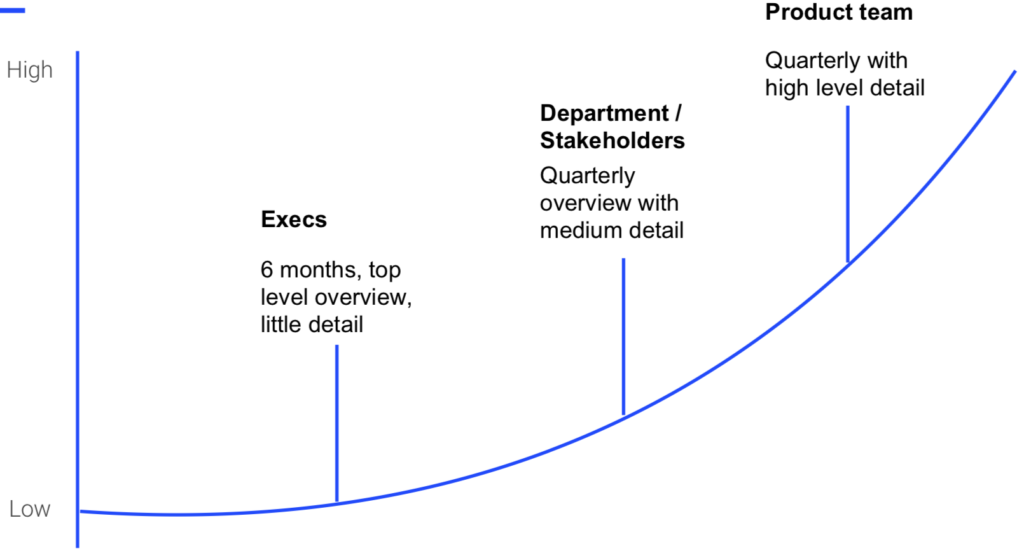 This and productboard's approach changed the game for me.
This and productboard's approach changed the game for me.
We've found it best to organize features by the user needs they address. Doing so keeps everyone focused on the problems our solutions should address. — productboard
Product Council Meetings
Enable your stakeholder with information. Present everything you're working on. Keep them involved. Empower them to make decisions.
Strategy & Roadmaps
Strategy is what you have to do. "Strategic decisions are hypotheses that need to be tested. Strategy execution is about validating those hypotheses in the leanest way possible."
Roadmap is how you will do it, your plan of execution to test your hypothesis is leading and trailing indicators. "Good roadmaps focus on outcomes, not outputs."
Prioritize roadmap inputs
- How does building this help us achieve our goals?
- What problems does this solve?
- What happens if we don't do this?
- What evidence do we have to suggest this will succeed?

Other Highlights
Reduce User Friction
Interaction friction - from a UX standpoint. that makes it easier for the user to go through your flow. Cognitive friction - from a product perspective. Simplifying user information on the screen. Emotional friction - removing emotion from the user flow, interaction.
Known Unknowns
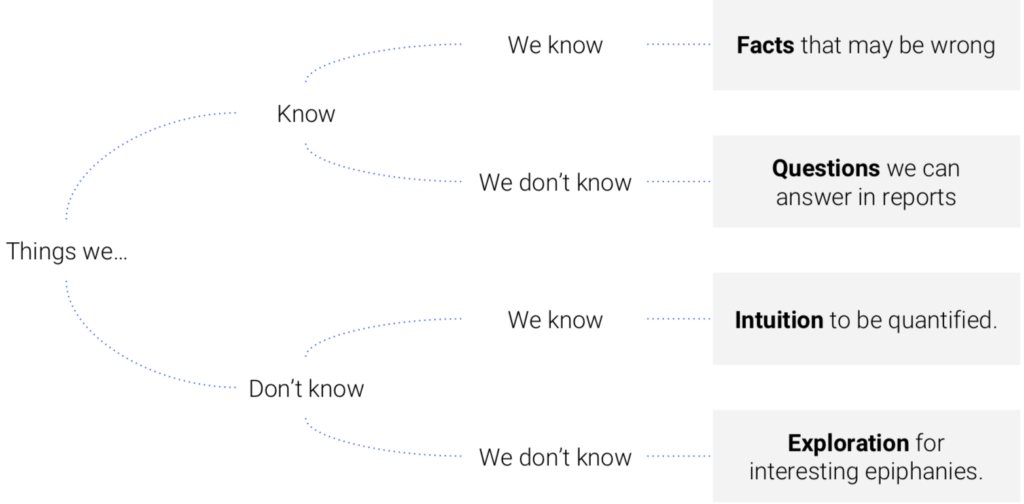
I love this and tried it at work. Some find it confusing, so here's my own spin

Run Experiments
Develop a hypothesis.
Hypothesis: I believe that X
The Test: Will change in Y
Leading Indicators: I believe I will see in two week W
Trailing Indicators: I believe I will see in 2, 6 months Z
An agile coach taught me the concept of running experiments. It goes something like
Imagine you're running a bakery shop and you have a hypothesis. Creating pink cupcakes will increase sales. What should you do? Create a hypothesis before you start:
- How many will you sell in the two weeks (i.e. leading indicators), first two months (i.e. trailing indicators).
- Measure your results against your leading indicator.
- Sales below your leading indicator. Decide if you need to modify your experiment? Or abandon all together?
- Sales on track. Continue with experiment and measure.
- Repeat in two months.
Write stuff down
Create principles to drive decisions about features. Get over yourself and write stuff down - the act of writing forces focus on problem your solving, assumptions, hypothesis, metrics, what you'd do with the data… Writing enables others to critique your work so that you can improve it.
Favourite memories from Guest Speaker
Introduction into Product Design by Sam Yuan
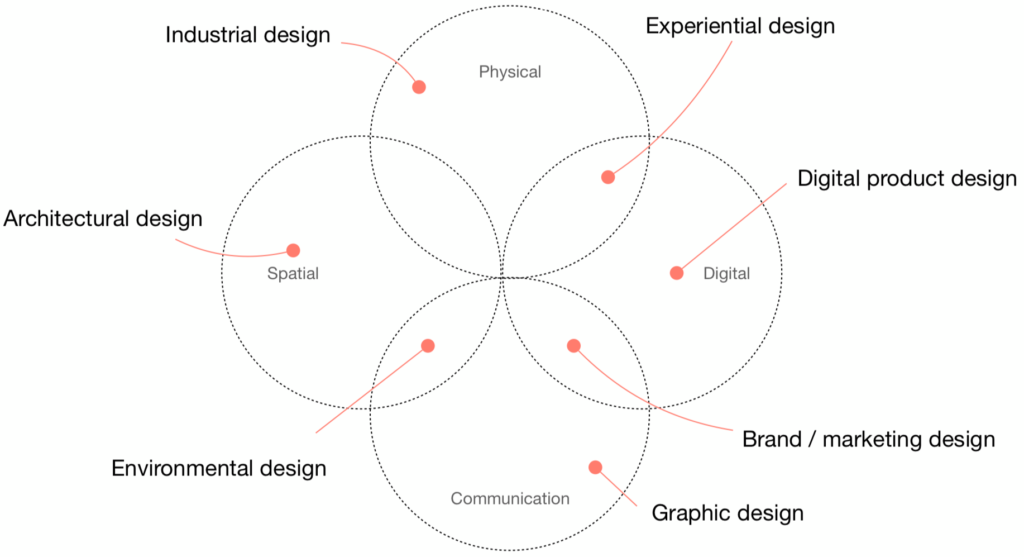
What is ~~digital product~~ design?
You begin to realize how big the world is.
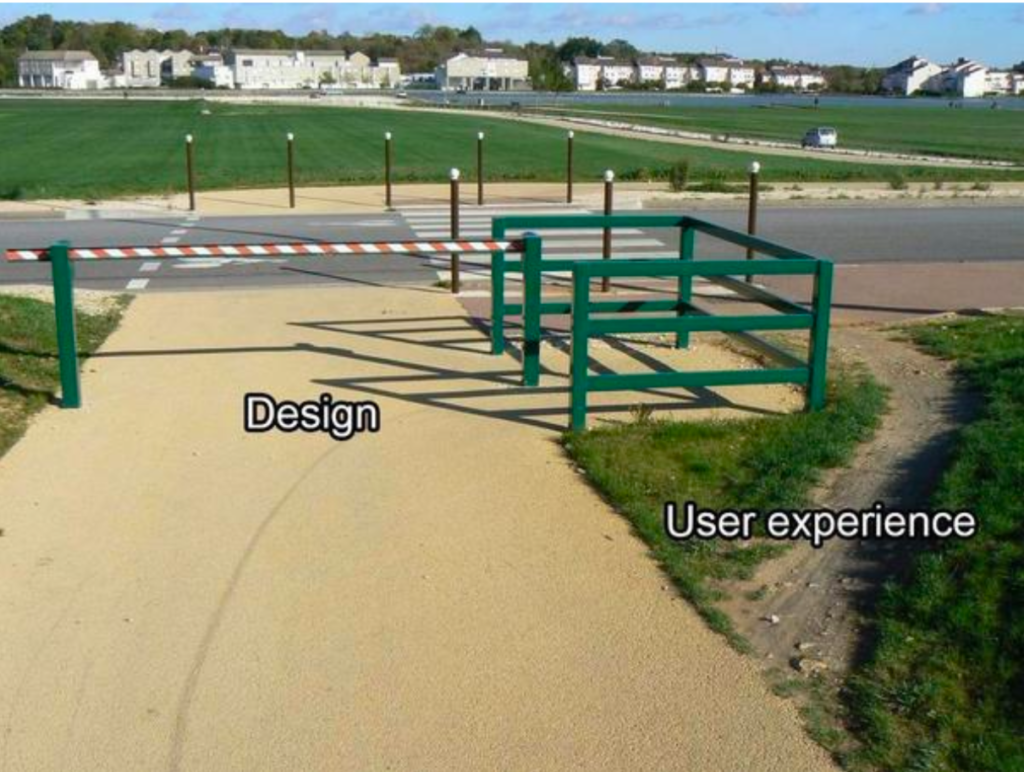
Design vs User Experience
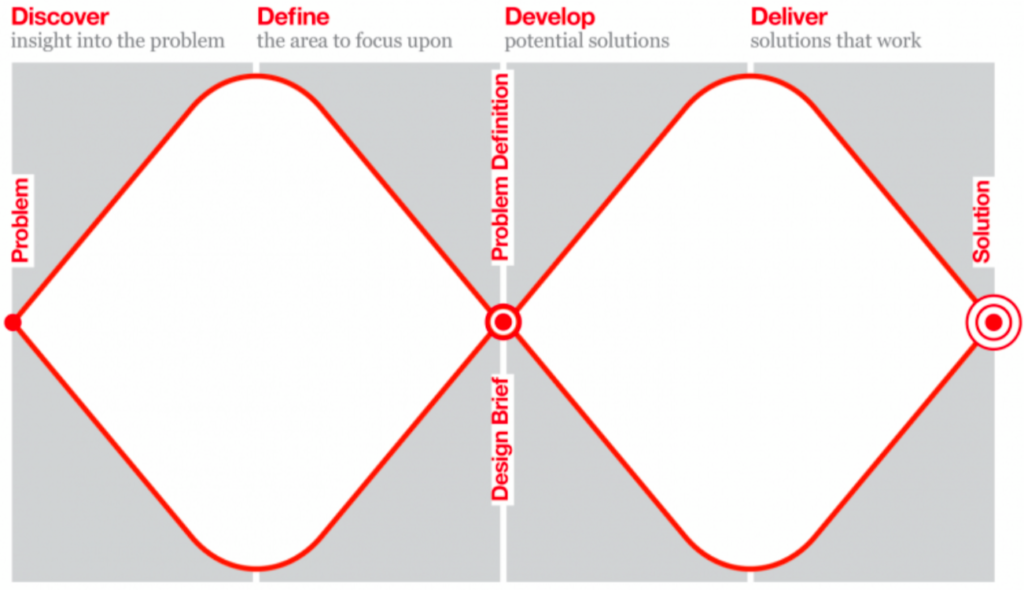
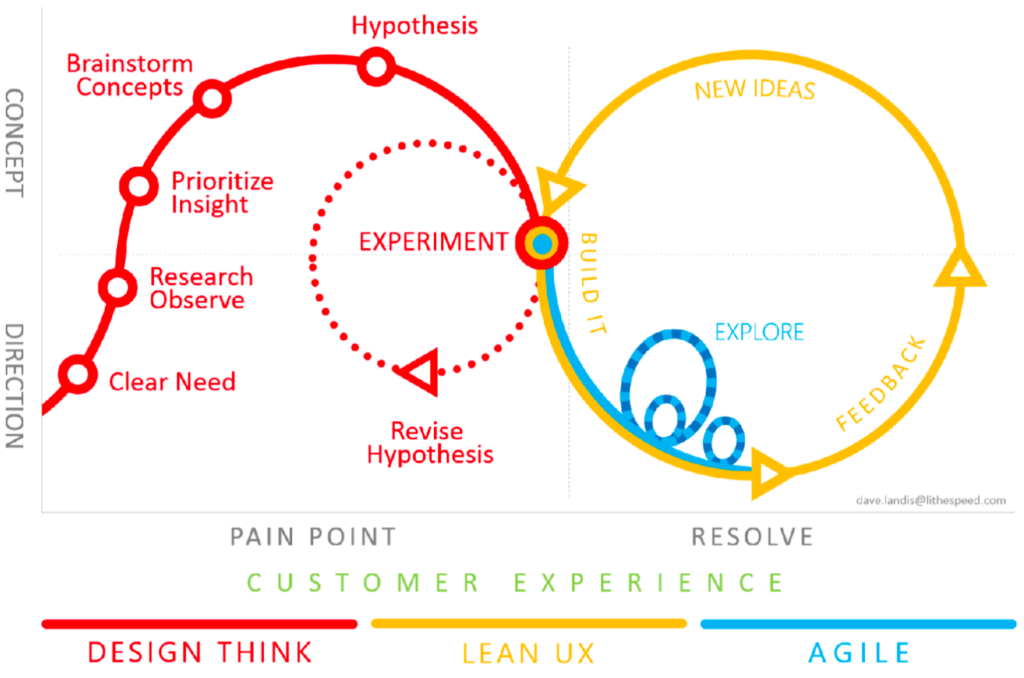
The discovery process. Design makes strategy concrete. Design supports delivering experiences.
![When [situation], I want to [motivation], So I can [get expected outcome]](/assets/writing/2021/2021.03.03-product-faculty-15.png)
Jobs to be Done "People don't want a quarter-inch drill. They want a quarter-inch hole."
This transformed how I think about everything.
To understand other teams' perspectives, read about their domain. At Shopify, business leaders share their favourite business books with designers, and designers share their design books with business leaders. This is what inspired me to read org design, business, design, marketing books.

Elements of user experience
I didn't get the importance of this until last year. It reminds what a designer taught me.
I always start with content. Then I create the structure. Then the design.
I used to do two or all three at the same time. Now I know why you start with content first — ignore the rest. The content is your "what." Structure and design can't fix building the wrong user needs.
Build the right product. Don't build the product right.
Being Intentional by Mitchel Gillespie
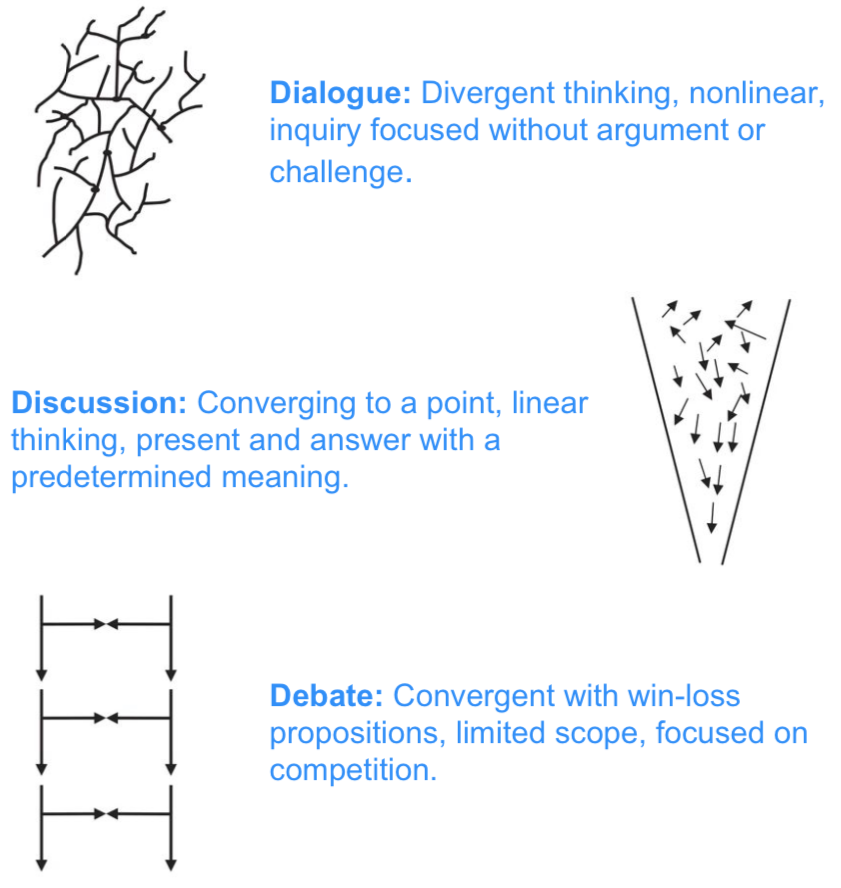
Be INTENTIONAL in everything you do. Dialogue, Discussion, and Debate. Inquiry focused without argument or challenge.
Embrace Patterns by Lindsay Rothman
Embrace patterns even though they're not optimal. Each time we added a new feature, we invented a bespoken solution.
My company had a pattern library that rotted and died because no one updated it — Everyone
The most important thing is living the pattern, as opposed to documenting it. To live a pattern, you need people to enforce it by reducing the # of patterns used. Optimizing the UX for every feature makes the whole product less optimal. It's a battle of consistency vs optimization. Consistency should win most of the time.
The problem I'm trying to solve is unique and deserve a new pattern — Everyone
Having an idea in your head isn't the same thing as writing words. Act the of writing forces you to be rigorous; it helps you clarify the thought. You don't need to write a novel; write the problem, assumptions, hypothesis, metrics, and what you've do. Writing empowers others to critique your work so you can make it better.
This speaks for itself. Embrace patterns.
The hidden secrets by Sikander Ali
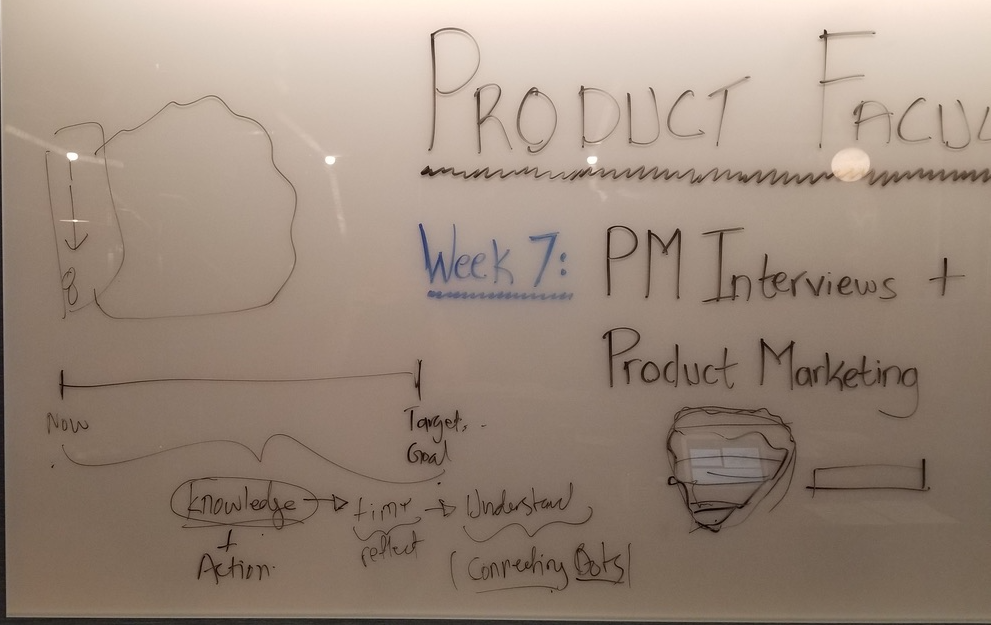
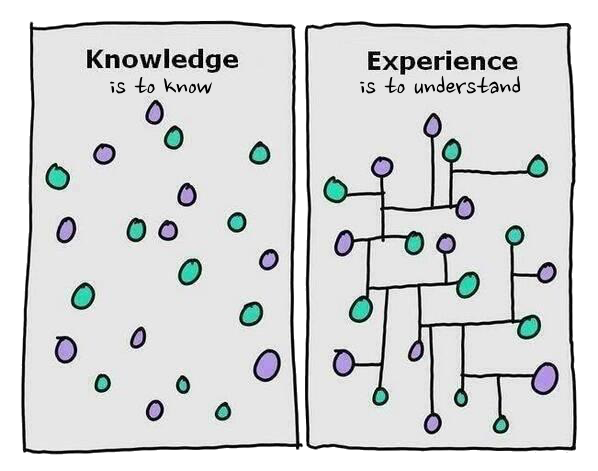
Knowledge vs Experience
We acquire knowledge and put it into action. Over time, we reflect and learn how things are connected. This is experience.
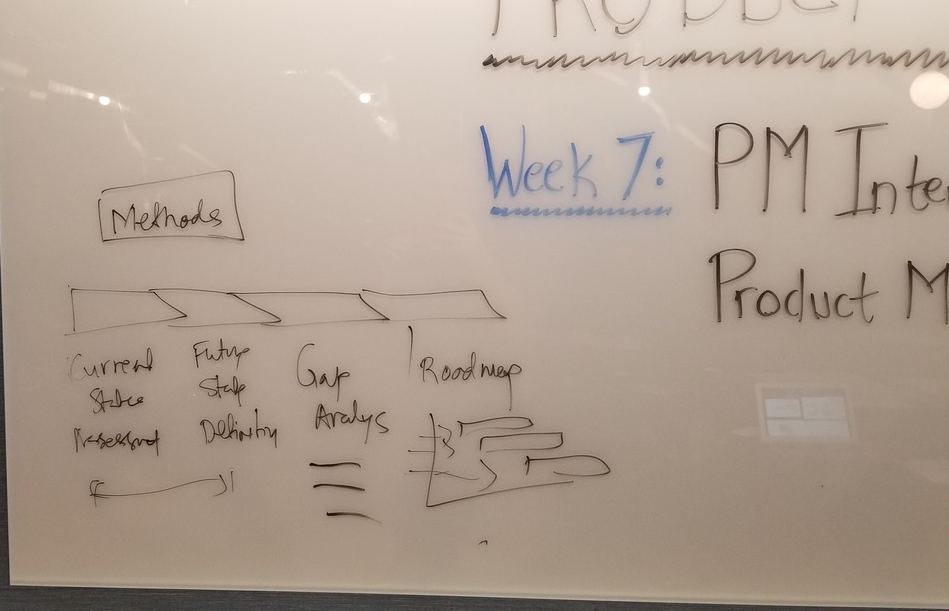
Why everybody uses Chevrons?
Everybody starts by asking. Where are we now? What is our target goal? The direction we take is in the middle. Chevrons convey to us the direction from here to there.
Check out my project
This is the result of my class project — applying new skills and insights I've gained the last two years.